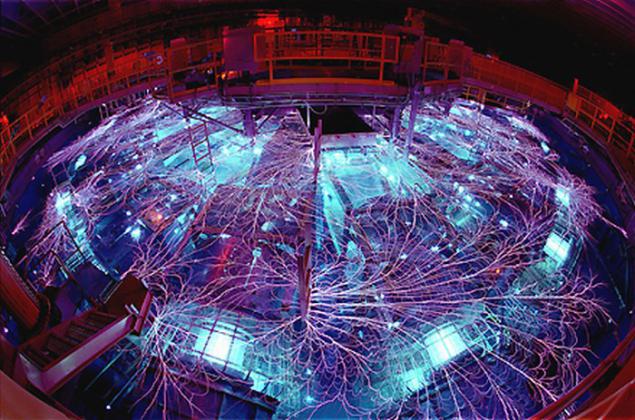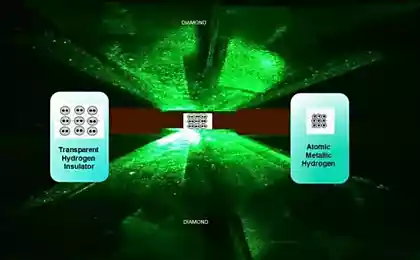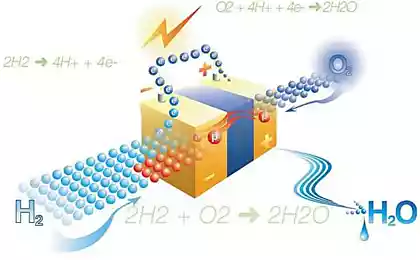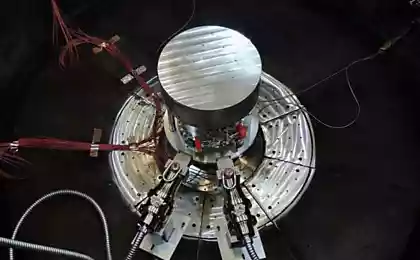817
Scientists are very close to the production of metallic hydrogen

A group of researchers from Sandia National Laboratories (Sandia National Laboratories, USA), together with other groups from the University of Rostock (Germany) conducted a successful experience compression of deuterium in the liquid state, which exhibits the properties of metal. In a study that was published journal Science, the scientists describe the stages of the experiment, which brings them closer to the ultimate goal - obtaining solid metallic hydrogen.
In the illustration above - a schematic diagram of the states of hydrogen. It shows the four well-known solid state from I to IV, two well-known liquid state and predicted state of the nuclear liquid. Blue circle means the rotation quantum molecules and wavy lines correspond to entanglement. Straight lines are where calculations show the existence of a covalent bond.
In 1935, physicists Hillard Bell Huntington (Hillard Bell Huntington) and Eugene Wigner (Eugene Wigner) for the first time put forward the theory , that hydrogen can exist in the metallic state, when the bonds between atoms are broken and there are free electrons.
For metallic hydrogen requires only one thing: a lot of pressure. Since then, many physicists have tried to prove the theory of the Wigner and Huntington's, but to no avail.
In the latest experiment, the researchers used a new method of increasing the pressure without unwanted side effects.
Until now, to create the maximum pressure used diamond anvil, where the substance is squeezed between the tips of two diamonds. Previous experiments have shown that this method can compress a substance with a high concentration of hydrogen to metal-like state.
In the experiment, Sandia National Laboratories decided to go the other way, and to compress the material used car Sandia Z (Z-machine) - an experimental setup and one of the world's largest X-ray sources. It is capable of generating up to 20 field Megagauss.

Z-Machine i>
Clutching a sample of the electrode near the container loaded with deuterium powerful electric shock from the Z-Machine. Shock waves pass through the container and squeezing even more substance. At that time, scientists have been monitoring how the material reflects light, the conventional way to recognize metal.
After compression, the substance has ceased to be transparent, and therefore reflect light. According to researchers, this is clear evidence that the substance is transformed from an insulator to metal.
This experiment - the most successful attempt to date to receive metallic hydrogen, whose existence was predicted 80 years ago. Over the solution of the problem beating other teams of researchers.
In addition to purely experimental results of metallic hydrogen has scientific value. The experiment shows how much pressure is necessary for such a transformation. This is useful information, for example, to explore other planets and stars that we know under what conditions such a process can take place.

For example, the existence of metallic hydrogen could explain феномен Saturn , which is too hot for her age: the real age of 4, 5 billion years of computer modeling gives him only 2, 5 billion years because of too high a temperature.
Source: geektimes.ru/post/252622/
9 Reasons Why Men appreciate women who are forty
19 WAYS search the GOOGLE, who does not know about 96% of users























